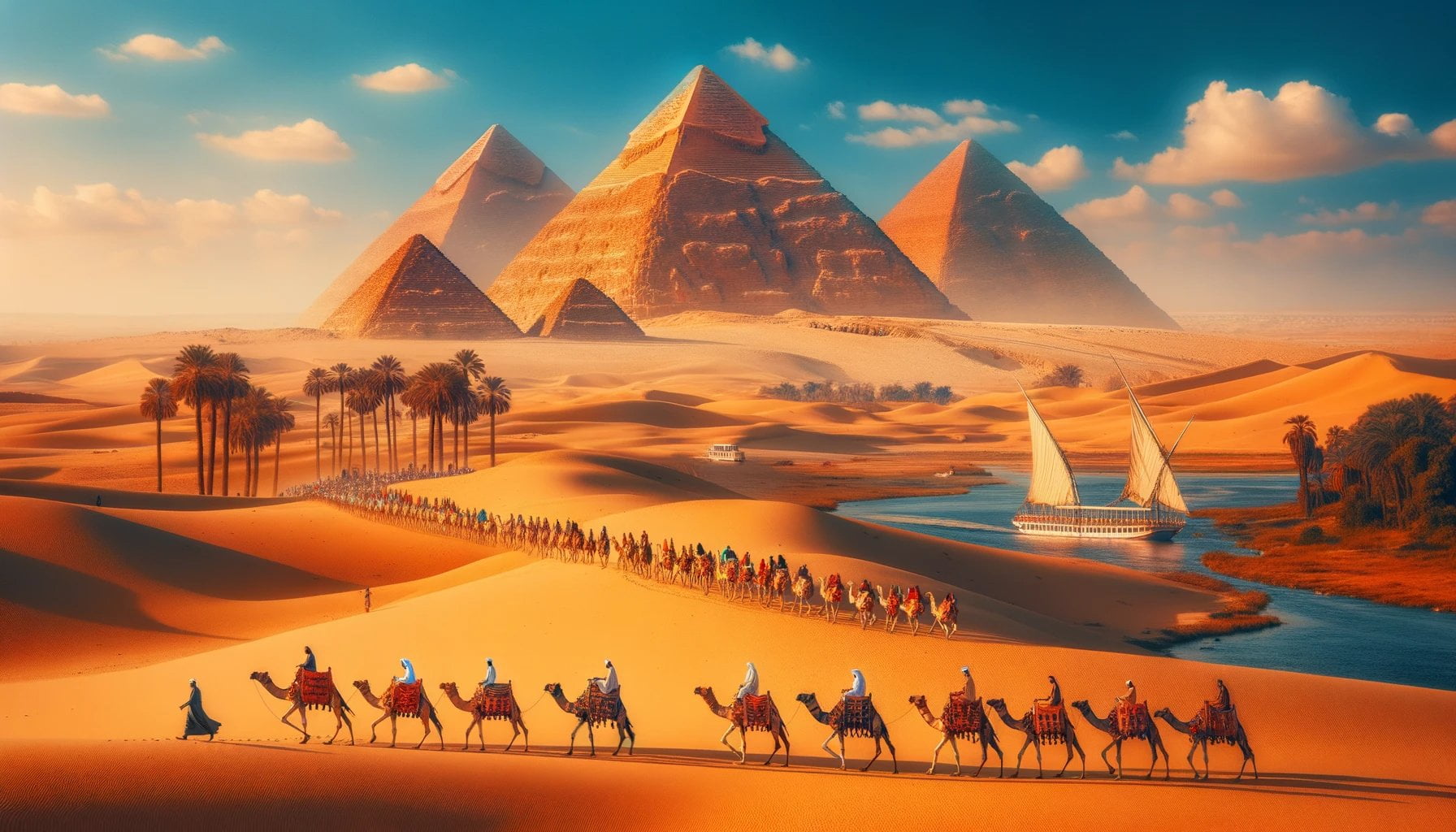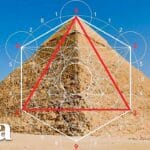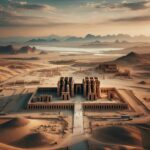Unearthing Ancient Egypt: Exploring the Majestic Ruins takes readers on an enchanting journey through time, delving into the captivating world of ancient ruins in Egypt. From the awe-inspiring Valley of the Kings to the iconic Great Pyramids of Giza and the breathtaking Abu Simbel, this article unravels the mysteries and grandeur of these historical marvels. With a focus on archaeology and a passion for storytelling, prepare to be transported into the rich history and cultural significance of Egypt’s ancient ruins as you embark on an unforgettable adventure.
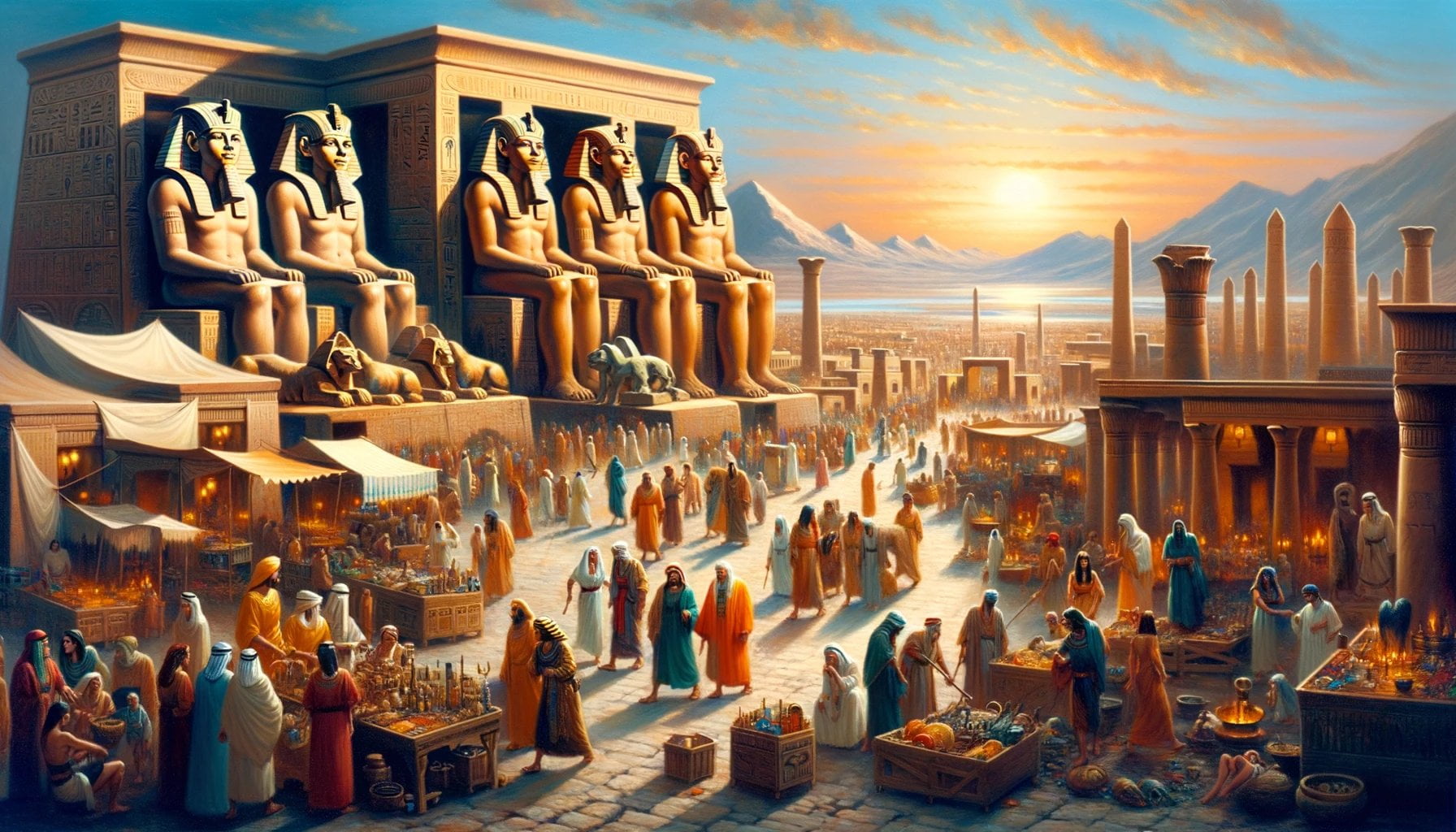
Key Takeaways:
- Ancient ruins in Egypt are categorized by regions such as Lower Egypt, Middle Egypt, Upper Egypt, Lower Nubia, Upper Nubia, and the Oases and Mediterranean coast.
- Specific ancient sites mentioned in each region include Alexandria, Abydos, Amarna, Abu Simbel, and Siwa Oasis.
- A more comprehensive list of ancient Egyptian sites can be found on Wikipedia.
- EF Go Ahead Tours provides a list of 10 of the best ancient ruins to see in Egypt, including Abu Simbel and Philae.
- The Wikipedia text used in the context is licensed under CC-BY-SA.
Ancient Ruins in Egypt: Unveiling the Timeless Treasures
Egypt, a land steeped in history and shrouded in mystique, boasts an impressive array of ancient ruins that stand as testaments to the brilliance of the once-mighty Egyptian civilization. From the awe-inspiring pyramids to the sacred temples and enigmatic tombs, ancient ruins in Egypt hold an allure that captivates both historians and adventure seekers alike. To embark on a journey of discovery through time, let us delve into the remarkable world of Egypt’s majestic ruins and unravel their hidden secrets.
Lower Egypt: Exploring the Mystic Cities Along the Nile
In Lower Egypt, the magnificent city of Alexandria, with its rich Hellenistic history, stands as a testament to Egypt’s cosmopolitan past. With the iconic Citadel of Qaitbay and the awe-inspiring Catacombs of Kom El Shoqafa, Alexandria reveals a fusion of ancient cultures that shaped the region.
Middle Egypt: The Enigma of Abydos and its Sacred Wonders
Moving on to Middle Egypt, the sacred city of Abydos takes center stage. This ancient site is home to the captivating Temple of Seti I, adorned with intricate carvings and vivid hieroglyphs that recount the stories of pharaohs and their divine lineage. The enigmatic Osirion, a subterranean masterpiece shrouded in mystery, adds an air of intrigue to the ruins of Abydos.
Upper Egypt: A Journey to the Heart of Ancient Egypt
Upper Egypt holds the crown jewels of ancient Egyptian civilization. Here, the sprawling metropolis of Luxor serves as the gateway to the famed Valley of the Kings. Ancient ruins in Egypt reveal themselves in grandeur at this necropolis, where pharaohs from the New Kingdom lie entombed, their tombs adorned with elaborate paintings and sacred texts.
Moving further south, the colossal temples of Karnak and Luxor rise majestically on the east bank of the Nile. Step back in time as you wander through the Hypostyle Hall, a forest of towering columns that pays homage to the gods and reaffirms the pharaoh’s divine connection. Witness the temple’s powerful allure as sunlight filters in, casting a mesmerizing glow on the ancient hieroglyphic inscriptions.
Lower Nubia: Journey to the Borderlands
Venturing into Lower Nubia, near the border with Sudan, the imposing ruins of Abu Simbel unfurl before your eyes. Carved into the mountainside, these twin temples, dedicated to Ramses II and his beloved wife Nefertari, evoke a sense of architectural mastery. Marvel at the colossal statues guarding the entrance, bringing to life the power and majesty of ancient Egypt.
Upper Nubia: Amidst the Temples of Nubia
As we journey further south into Upper Nubia, the island of Philae emerges from the tranquil waters of the Nile. Here, the Temple of Isis stands defiant against the ravages of time, its delicate reliefs and elegant architecture a testament to the exquisite craftsmanship of ancient Egypt.
The Oases and Mediterranean Coast: Gems amid the Sands
On the fringes of the desert, the Western Desert Oases, including Siwa, Bahariya, Farafra, Dakhla, and Kharga oasis, beckon with their lush pockets of green amidst the arid landscape. Explore ancient ruins and rock formations dating back thousands of years, testifying to the human presence in these remote oases.
Unearthing Egypt’s Ancient Ruins: A Journey Through Time
As we conclude our exploration of ancient ruins in Egypt, it becomes evident that these magnificent remnants of the past bear witness to the wealth, power, and ingenuity of the ancient Egyptians. From the Great Pyramids of Giza to the Valley of the Kings and beyond, Egypt’s ancient ruins offer a glimpse into a bygone era. They ignite our imagination and remind us of the intricate tapestry of civilization that has shaped our world.
So, whether you are an avid traveler, an aspiring archaeologist, or a history enthusiast, embark on a journey to Egypt’s ancient ruins, where every stone and inscription has a story to tell. Immerse yourself in the rich tapestry of ancient Egypt’s wonders, and let these mystical sites transport you to a world where the past intertwines with the present, and the mysteries of a bygone era unfold before your very eyes.
Explore the captivating ancient ruins of Bolivia, from the mysterious Tiwanaku to the majestic Inca city of Machu Picchu. Discover their rich history and cultural significance by clicking here.
Delve into the enchanting ancient ruins of Malta, where you can wander through the awe-inspiring temples of Ħaġar Qim and Mnajdra, transporting yourself to a bygone era. Immerse yourself in the fascinating history by clicking here.
Uncover the remarkable ancient ruins of Brazil, home to the impressive Stonehenge of the Amazon, known as the Amazonian Stonehenge. Be intrigued by the mysteries awaiting you by clicking here.
Test your knowledge with intriguing ancient Roman trivia, dive into their captivating world filled with gladiators, emperors, and architectural wonders. Challenge yourself by clicking here.
Exploring the Valley of the Kings: Tombs of the Pharaohs
The Valley of the Kings is an ancient royal necropolis located near modern-day Luxor in Egypt, where pharaohs and nobility from the New Kingdom were laid to rest. This awe-inspiring site is steeped in history and mystery, offering a glimpse into the grandeur and religious beliefs of Ancient Egypt.
Unveiling the Ancient Tombs
The Valley of the Kings is divided into two valleys known as East Valley and West Valley, home to a total of 63 rock-cut tombs. These tombs were the final resting places of pharaohs, powerful nobles, and even the wives and children of the pharaohs. The valley served as a burial ground for the 18th, 19th, and 20th dynasties of ancient Egypt, and the tombs within it were constructed between 1539 and 1075 BCE.
Journey Through History
One of the most famous tombs in the Valley of the Kings is the tomb of King Tutankhamun, discovered by Howard Carter in 1922. This remarkable discovery unveiled a treasure trove of artifacts and gave the world an unprecedented insight into the life and burial practices of an ancient Egyptian pharaoh.
But King Tutankhamun’s tomb is just one of many fascinating tombs in the Valley of the Kings. Other notable pharaohs buried here include Ramses II, Tuthmosis III, and Seti I. Each tomb tells a unique story, adorned with intricate artwork and hieroglyphics that provide clues about the pharaoh’s reign and beliefs.
Preserving Ancient Wonders
The Valley of the Kings holds immense archaeological significance and has been designated as a World Heritage site since 1979. Its beautifully decorated tombs offer a wealth of information about ancient Egyptian culture, religious rituals, and the afterlife. Exploring these tombs is like stepping back in time, as you witness the remarkable craftsmanship, artistic expression, and reverence for the pharaohs.
Key Takeaways:
- The Valley of the Kings is a royal necropolis near Luxor, Egypt, where pharaohs and noble individuals from the New Kingdom were buried.
- It consists of two valleys: East Valley and West Valley, with a total of 63 known rock-cut tombs.
- The valley was used as a burial ground by pharaohs from the 18th, 19th, and 20th dynasties of ancient Egypt.
- Famous pharaohs buried in the Valley of the Kings include Tutankhamun, Ramses II, Tuthmosis III, and Seti I.
- The most iconic tomb in the valley is that of King Tutankhamun, discovered by Howard Carter in 1922.
- The Valley of the Kings is an essential site for Egyptologists and has been recognized as a World Heritage site.
- The tombs within the Valley of the Kings offer a glimpse into ancient Egyptian culture, religion, and burial practices.
Sources:
– Valley of the Kings: The Complete Guide for 2023 – Earth Trekkers
– Valley of the Kings, Egypt – National Geographic
Unveiling the Mysteries of Abu Simbel
Abu Simbel, located in southern Egypt near the border between Egypt and Nubia, is a site that holds captivating ancient temples built by the eminent Egyptian king Ramses II. The Great Temple, standing at an impressive 98 feet high and 115 feet long, features four colossal statues of Ramses II seated on his throne at the entrance. This site is considered a sacred sanctuary, separate from the mundane world, and it serves as a testament to the grandeur and artistic brilliance of ancient Egypt.
Why is Abu Simbel so significant?
Abu Simbel is not only renowned for its awe-inspiring monuments but also for its fascinating history and cultural significance. These temples were constructed to showcase Egypt’s might to the Nubians and to Egyptianize the people of Nubia. The relocation of Abu Simbel’s temples due to the construction of the Aswan High Dam is also a remarkable engineering feat that adds to its mystique.
Exploring the Great Temple of Abu Simbel
As you venture into the Great Temple, you’ll find yourself in the presence of the colossal statues of Ramses II, which seem to guard the secrets of the past. The intricate carvings and hieroglyphics that adorn the temple walls depict significant moments from the king’s reign, immersing you in the rich tapestry of ancient Egyptian history.
The Enchanting Beauty of Nefertari Temple
Adjacent to the Great Temple lies the smaller but equally captivating Nefertari Temple, dedicated to Ramses II’s beloved wife. It showcases the superb craftsmanship and attention to detail that characterized ancient Egyptian architecture and artistry. As you explore the temple, you’ll be captivated by the stunning depictions of Nefertari and the intricate frescoes that adorn the walls.
Preservation Efforts and Modern Wonders
Abu Simbel’s temples faced the imminent threat of submersion due to the rising waters caused by the Aswan High Dam. However, a concerted international effort led to the relocation of the entire complex, ensuring its preservation for generations to come. This incredible achievement is a testament to the enduring value placed on Egypt’s cultural heritage.
Key Takeaways:
– Abu Simbel is a sacred site showcasing the grandeur and artistic excellence of ancient Egypt.
– The temples were built by Ramses II to impress the Nubians and Egyptianize the people of Nubia.
– The Great Temple’s colossal statues and intricate carvings provide insights into Ramses II’s reign.
– The Nefertari Temple exhibits exquisite craftsmanship and stunning frescoes.
– Preservation efforts through the relocation of Abu Simbel’s temples have ensured the site’s continued existence.
Sources:
– Abu Simbel | History, Temples, Map, & Images | Britannica
– Abu Simbel – World History Encyclopedia
Ancient Egyptian Temples: Spiritual and Architectural Marvels
The ancient Egyptian temples are more than just architectural marvels – they are spiritual and cultural heritage sites that hold a profound significance in the history of Egypt. These temples were not only grand structures but also sacred places that served as a link between the divine and human realms. Let’s dive deep into the mesmerizing world of Ancient Egyptian temples and uncover their secrets.
The Temple: A Sacred Connection
To truly understand the magnificence of ancient Egyptian temples, it’s essential to grasp their purpose and symbolism. Egyptians believed that temples were the earthly representation of the divine realm, equating them with the sacred hill where the world was created according to Egyptian mythology. The temples’ intricate architecture aimed to preserve the forms and conventions that mirrored the perfection of the world’s primordial moment.
Types of Temples in Ancient Egypt
Ancient Egyptian temples can be categorized into two main types: cult temples and funerary temples. Cult temples were dedicated to various deities and housed their images, while funerary temples were built as shrines for the funerary cults of deceased kings.
Architectural Marvels: Construction and Materials
Egyptian architects and engineers showcased their profound understanding of aesthetics and engineering through the construction of these temples. They used materials such as sandstone and stone, with unbaked mud brick and stone being the principal building materials.
One of the most iconic ancient Egyptian temples is the Karnak Temple in Luxor. Karnak Temple served as the principal religious center of the god Amun-Re during the New Kingdom. Its massive complex demonstrates the opulence and grandeur of ancient Egyptian architecture.
Another notable temple is the Temple of Hatshepsut in Deir el-Bahari. This temple is not only an architectural marvel but also a testament to the reign of one of Egypt’s most powerful female pharaohs.
Unveiling Mysteries: Mythology and Significance
Ancient Egyptian temples hold fascinating stories, cultural significance, and mythological importance. The walls of these temples are adorned with intricate carvings and hieroglyphics that depict moments from the reigns of pharaohs and various religious ceremonies.
The temples provide invaluable insight into ancient Egyptian religious beliefs, rituals, and cosmology. Exploring these temples allows us to unravel the complex tapestry of Egyptian culture and religion and witness the intertwining of the past and present.
Key Takeaways:
– Ancient Egyptian temples were not only architectural marvels but also held immense spiritual and cultural significance.
– They represented a connection between the divine and human realms.
– There were two main types of temples: cult temples for deities and funerary temples for deceased kings.
– The construction of these temples showcased the Egyptians’ advanced understanding of engineering and aesthetics.
– The intricate carvings and hieroglyphics on the temple walls tell fascinating stories of Egyptian mythology and history.
Sources:
– Britannica – Ancient Egyptian architecture
– Egypt Time Travel – Egyptian Temples: Where History and Mythology Intersect
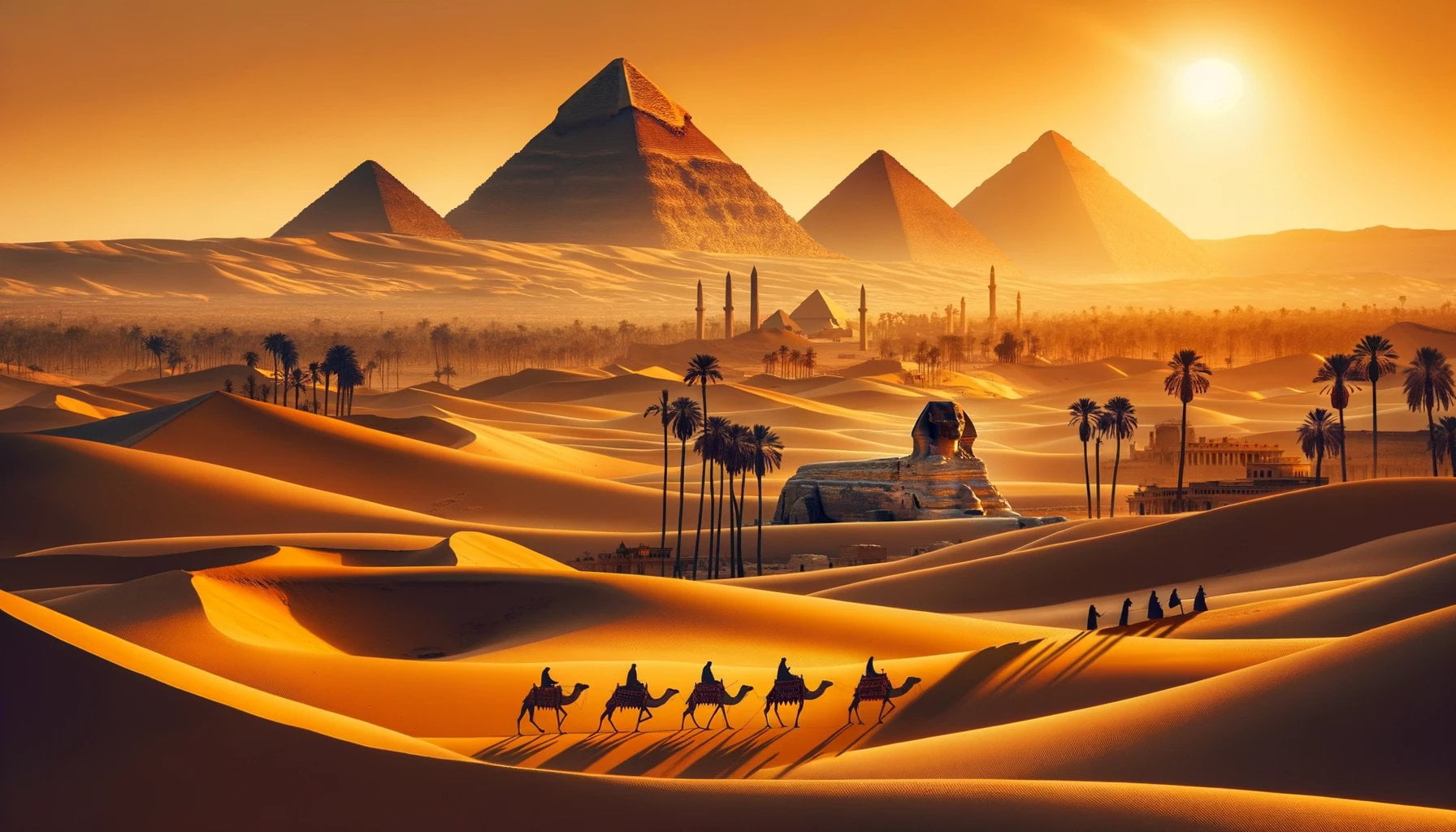
FAQ
Q1: What is the Valley of the Kings?
A1: The Valley of the Kings is a royal necropolis near Luxor, Egypt, where pharaohs and nobility from the New Kingdom (1539 – 1075 BCE) were buried. It contains 63 known rock-cut tombs spread across the East Valley and West Valley.
Q2: Which famous pharaohs are buried in the Valley of the Kings?
A2: The Valley of the Kings is the final resting place of pharaohs such as Tutankhamun, Ramses II, Tuthmosis III, and Seti I, as well as powerful nobles and the wives and children of the pharaohs.
Q3: When were the tombs in the Valley of the Kings constructed?
A3: The tombs in the Valley of the Kings were constructed between 1539 and 1075 BC.
Q4: Where is Abu Simbel located?
A4: Abu Simbel is located near the border between Egypt and Nubia in the Nubian Valley.
Q5: What is the significance of Egyptian temples?
A5: Egyptian temples were architectural marvels that represented a link between the divine and human realms. They were considered sacred places and showcased the advanced understanding of engineering and aesthetics of the Egyptians.
- SYBAU See You Baby Meaning: Gen Z Slang Evolves - July 1, 2025
- Unlock Your Inner Youth: Lifestyle Secrets for a Vibrant Life - July 1, 2025
- Decode SYBAU Meaning: Gen Z Slang Explained - July 1, 2025
